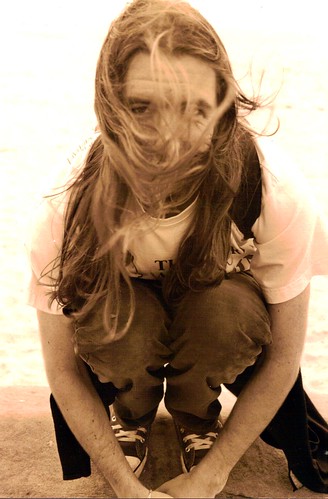another x-post, to bring the museum back up to speed...
Today marked the seventh day of our Bundanon stay, so why does it feel like we just got here?
I realised upon waking that while I had walked back and forth across the property many a time, had traversed its open fields, dipped a toe in its river, skirted its grand homestead and returned many times to the swallowing bush, I still felt strangely disconnected from the environs.
The visual sweep down from our cottage to the homestead and the river beyond, back up the treed ridge on the far side of the river, allows us to see much of the 300 cleared acres of the working farm. While perched on the very edge of the bush – which makes up the bulk of the 1100 hectare property – the cottage has its back turned to the trees. It’s their presence I feel strongest, but until today it had been a looming feeling rather than a deep awareness. I could hear the birds and had seen plenty of the kangaroos, wombats and even snakes that came and went, but all my time in there had been active; imposing art ideas and projects without spending enough time doing another of the things which I had come here to do – listen, learning, find what inspiration it could impart.
I realised in doing so, I was repeating a lot of the mistakes artists made early in Australian colonial history – their cultural and artistic baggage so heavily laden with British sensibilities that they – quite literally – couldn’t see the forest for the trees. Paintings from that era, pastoral projections onto an untameable bush, build from a palette entirely unsuitable for the subject matter; pastel tones and wan light borrowed straight from a British sky that simply does not exist here. I was reminded of a discussion with a Brazilian photographer who is often criticised because the skies in his photographs are deemed ‘ too blue’ – it seems we cannot conceive what exists outside our own engagement, comprehension and direct experience.
I wasn’t bringing this particular sensibility, but I certainly hadn’t taken the time or set up the mind space for meaningful exchange. I had come with ideas for how to interact and ploughed on with them with barely a moment to see what suggestions it might make.
Feeling it was time to try and move beyond the same mistakes, I took a new route up the ridge to an area of the bush I’d not yet visited. Clearing my mind of potential projects, of photographic or textual possibilities, I was there simply to be. To see, hear, touch and smell, though stopping short of taste. I wanted to hear what the bush had to say, before trying to speak for it.
Selecting a place in a small clearing, beneath a towering silver gum, I lay, considering what I saw and how it compared to D.H Lawrence’s description in Kangaroo:
But the bush, the grey charred bush... It was so phantom-like, so ghostly, with its tall pale trees and many dead trees, like corpses, partly charred by bushfires... And then it was so deathly still. Even the few birds seemed to be swamped in silence. Waiting, waiting – the bush seemed to be hoarily waiting... it was biding its time with a terrible ageless watchfulness, waiting for a far-off end, watching the myriad intruding white men.
Was this accurate? Did it capture something essential about the harsh, unforgiving, unlovable Australian bush? Not from what I could see.
The green of fern of leaf of palm of moss of mottled bark; the countless browns of stripping bark of fallen leaves, their neighbours orange and red. Purple toadstool red berry golden sun silver gum cobalt sky. The white of flowering gums, the black of soil below – the one colour I couldn’t find was grey.
There were ghosts and phantoms aplenty, but these corpses spoke not of death but of life – every corpse-like tree and charred stump was swamped by viridian ferns and proud gums, played host to teeming life.
In place of stillness or silence was a ceaseless treetop chatter, gum tree crowns rustling their rasping dry leaves, while from beneath the soil a sub-aural hum, worms and ants and termites and beetles (not to mention the ubiquitous Bundanon wombats) rumbling about their business.
A passing fly with buzz in trail showed the first sign of life between soil and sky, but was soon joined by the melodious melange that made up even this tiny segment of bush. In the space of a few minutes, my ear slowly attuning to their song, there were chirps, twitters, flute-pitched whistles, twitches, wit-woos, zupzups, vupps, tzetzetzes, zharps and a dozen more songs that leave our alphabet adrift in their sonorous wake – the further from our language and ability to replicate they were, the more indelible their mark.
At first I couldn’t see from where any of these sounds were coming, but a few minutes of lying still and they soon started to emerge, swooping, fluttering and flapping their way across the clearing, from tree to tree and branch to branch, adorned in feathers blue, brown, red, orange, gold and green.
Amidst all of this, thinking once more of this ‘grey’ nothingness, fell a peerless light, a gold and silver gilt; dappled streaks of honeyed tones that seemed a rich and precious gift.
Seven days in, I had finally arrived at Bundanon.
- Benjamin
Tuesday, 20 May 2008
Subscribe to:
Post Comments (Atom)

No comments:
Post a Comment